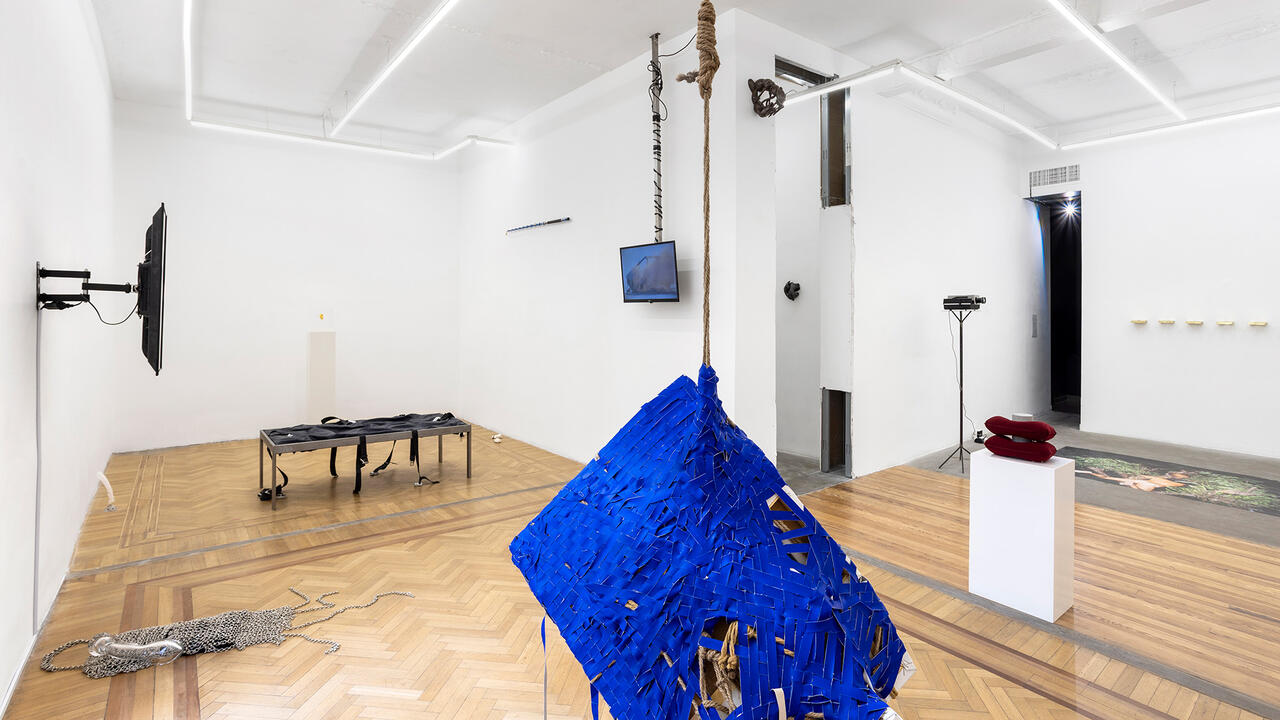BP.17
Various venues, Buenos Aires, Argentina
Various venues, Buenos Aires, Argentina

BP.17, the second Buenos Aires biennial of performance, ended as it began six weeks earlier, on a dadaist note: William Kentridge’s Refuse the Hour (2012), an operatic spectacle with sung gibberish, oversized geometric costumes, black-and-white film projections and unusual instruments. The fragmented performance, with its angular art direction and atonal score, conveyed a dream landscape untouched by the conventional passage of time. Kentridge’s influences were similar to those of the 20 young Argentine artists who opened the biennial on 13 May with the collective project Antihomenaje Dadá (Anti-Homage Dada, 2017), performing 101 years after artists, poets and intellectual pacifists gathered in Zurich’s Cabaret Voltaire. At the Recoleta Cultural Centre – one of BP.17’s more than two-dozen venues – they collaged poetry on the walls, roller-skated in extravagant costumes and held mock shooting games. They thus alluded to the absurd, cross-disciplinary performances of the dadaists and their response to the horrors of World War I, suggesting perhaps that today’s world might be no less mad.

During the biennial’s run, over 100 national and international visual artists, theatre directors and choreographers traversed performance disciplines in the Argentine capital, often harnessing the power of the absurd to critical effect. At the National Museum of Fine Arts, French choreographer Yann Marussich performed Bleu Remix (Blue Remix, 2007), sitting motionlessly in a heated glass box wearing nothing more than a loincloth, while sweating and crying blue fluid. The artist collective Etcetera approached visitors as they queued to get a glimpse of Marussich and asked them to sign a petition to ban hell. According to Etcetera co-founder Federico Zukerfeld, the petition refers to a letter that artist Leon Ferrari wrote to Pope John Paul II 20 years ago, asking him to ban torture in the afterlife. Co-founder Loreto Garín Guzmán added that ‘having religion legitimate terror in a hereafter, visualized in churches, publicizes hell on earth.’ The full list of signatories will be presented to the current pope, who, coincidentally, censored Ferrari’s 2004 retrospective in Buenos Aires. The petition is part of the group’s practice, which deals with issues of human rights abuses and engages with the public in the streets, sometimes in outright political protest, but always with wry – and somewhat absurdist – humour.
Julian Rosefeldt’s Manifesto (2015), on view at MALBA, featured Cate Blanchett in a dozen disparate roles, creatively interpreting 20th-century manifestos. That these historical texts still resonate in today’s tumultuous political climate is demonstrated by Santiago Sierra’s marathon 56-hour-and-43-minute reading of The Names of Those Killed in the Syrian Conflict between 15 March 2011 and 31 December 2016 (2017) at the Recoleta.
Christian Falsnaes’s Moving Images (2015) replaced the performer’s body with that of the viewer. In a gallery at the Recoleta, visitors were instructed by a recorded voice to complete simple actions: stand, walk, kneel, consider images projected on two screens or simply look at each other. Each exercise was followed by a brief period of reflection. Moving Images questions how readily people are willing to accept authoritative instructions – and endorse oppressive forms of power. Are we even conscious of such decisions? In the work, each viewer is both a performer and a member of the audience, a maker and a material – and while participating, they must consider their actions with critical distance.

In her guest lecture – part of the biennial’s robust academic programme – Coco Fusco claimed that, as opposed to teaching, ‘there is no demand to tell the truth in performance art. The artist has the responsibility to make art, which are lies – though some fictional constructs allow us to understand deeper truths about the world we live in.’ This sense of constructive artifice – of performance as a pedagogical tool – was at play in Lola Arias’s Audition for a Demonstration (2014-17), in which the theatre director invited members of the public to audition, discuss and re-enact events from the 2001 Argentine economic crisis. Each participant selected a key player in the 19-20 December protests to impersonate; they were then interviewed in costume and digitally edited into archival photographs. In the auditorium of the General San Martín Cultural Centre, an audience followed the behind-the-scenes auditions on screens, where the actors’ real-life stories intertwined emotionally with their scripted roles. One participant who had been shot at the protests shared his story before he took on the role of a police officer. Another dramatically relived the moment they defended the organization Mothers of the Plaza de Mayo against attacks by the police. These deeply personal re-enactments powerfully recalled Argentina’s recent socio-political turmoil.
The widely varied performances at BP.17 all seemed to demonstrate the intricacies and absurdities of contemporary society, drawing critically from a broad variety of media and references. Like their dadaist predecessors, those participating moved freely across disciplines to demonstrate that, a full century later, life is just as unstable.
Main image: William Kentridge, Refuse the Hour, 2011. Courtesy: @ John Hodgkiss and BP.17, Buenos Aires






















